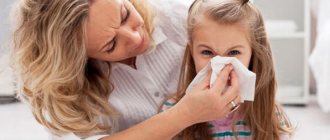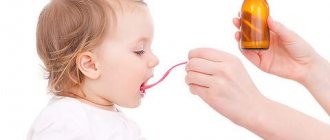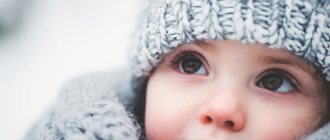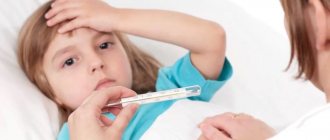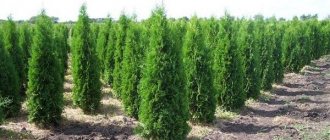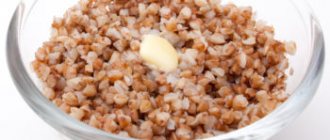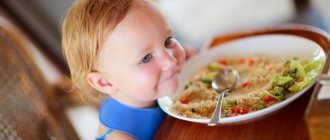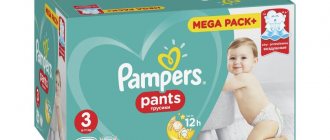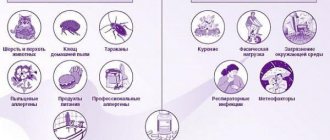Whooping cough is an acute infectious disease of the respiratory tract caused by B. pertussis. The disease occurs throughout the world and affects children and adults, but is most dangerous in infants [1].
Whooping cough is transmitted by airborne droplets; the source of infection for young children is very often older family members (in 74–96% of cases [2]): parents [3], brothers and sisters over 6 years of age [4] with an unrecognized respiratory disease like whooping cough. In addition, modern science suggests the possibility of carriage of B. pertussis (the causative agent of whooping cough) in previously vaccinated children and adolescents [1].
Whooping cough in infants is often severe, requires hospitalization (50% of cases [5]) and causes serious complications. Young children can die from pertussis infection and its complications [6].
The course of whooping cough.
Children in the first year of life are characterized by an atypical course of the disease. Read more about the typical course of whooping cough in the article “Symptoms of whooping cough in children.”
Usually the disease begins with a runny nose, sneezing, and a slight cough, which gradually progresses. Catarrhal symptoms are short-lived (lasting only a few days), and in some cases may be absent [7].
The course of whooping cough in different age groups
Soon the cough becomes stronger, often accompanied by increased attempts to inhale, cyanosis, and a slow heart rate. After coughing, 60% of children experience vomiting [7]. As a rule, coughing attacks are more severe at night.
Reprises - increased attempts to inhale at the height of a cough, accompanied by a whistling sound - a characteristic manifestation of whooping cough, are often absent in children.
Cough with whooping cough with reprises Cough without reprises (for comparison)
In some children, there may be no cough at all, and the infection is manifested by frequent attacks of apnea - short stops in breathing. Apnea attacks are short-lived and can rarely cause death, but in most cases they cause complications such as seizures and hypoxic brain damage [7,8].
Treatment of whooping cough in newborns: medications or traditional medicine?
If you suspect your child is developing whooping cough, be sure to contact your pediatrician. He will prescribe urine and blood tests for the baby; in some cases, a smear is taken, which can be used to accurately determine the disease.
Note! A baby who has whooping cough is not vaccinated because antibodies to the infection will not be produced. It is important to choose the right conservative treatment.
Regardless of the stage at which the child’s disease occurs, he must be urgently hospitalized to avoid possible consequences. Intensive therapy and antibiotics are used to treat the disease.
It is imperative to eliminate breath holdings and convulsive coughing attacks. A nutritious diet is recommended, in accordance with the age of the newborn. It is advisable to drink plenty of fluids if you are breastfeeding - this will not be difficult. Sometimes even breastfed babies are shown exclusively expressed breast milk. If a child vomits, he needs to be fed afterward. The following medications are used to treat whooping cough:
- Levomycytin;
- Ampicillin;
- Erythromycin.
Typically, such antibiotics are prescribed for oral administration; antibacterial agents are administered in injections only in the case of an advanced form. Antitussive drugs approved for use in infants are prescribed as concomitant medications: these may be Ambrobene or Lazolvan.
Doctors recommend that if a child has coughing attacks, sit him down or hold him upright, so the baby can clear his throat faster. The child must be given an individual daily routine, which must be strictly followed. It is necessary to provide the sick baby with sufficient oxygen. In the room where the child is located, it is necessary to do wet cleaning twice, and also ventilate the room at least twice a day.
Children's humor! I’m standing in front of the open refrigerator, thinking: “How can I eat something so delicious?” Sonya (3.5 years old) - Grandma, take a pill.
Subsequently, after the newborn is discharged, a quarantine is declared in his family, since even a treated child for 1.5 months can infect others with whooping cough while coughing or sneezing. Be sure to create a calm environment at home so as not to provoke coughing attacks in your newborn. If children have had whooping cough at an early age, strong immunity develops, but vaccination should not be avoided. DTP vaccination will not be superfluous, unless they are completely contraindicated for the baby from birth.
Is it possible to treat childhood whooping cough with folk remedies?
Not so long ago, when medicine was not so strong, traditional medicine was used as a remedy for the treatment of all diseases accompanied by a piercing cough, including whooping cough. But before using this technique, be sure to talk to your doctor. What can you do with the approval of a specialist?
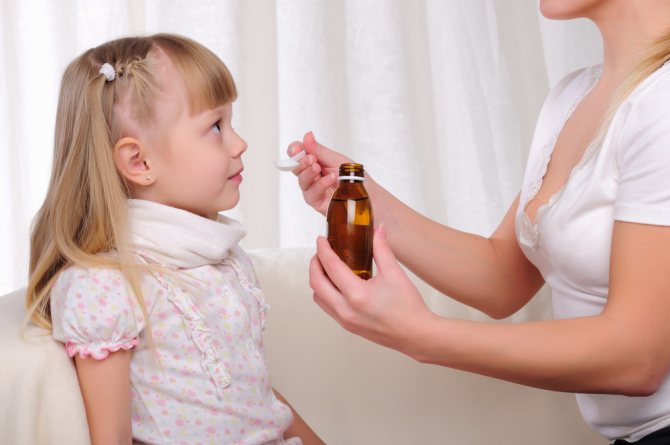
- Nettle juice - it perfectly relieves swelling from the lungs, significantly reduces the frequency of coughing attacks, and facilitates the removal of sputum in a newborn. A newborn baby with whooping cough can be given juice from a bottle, diluted a little with boiled water. For babies up to 6 months, 1-2 teaspoons twice a day is enough.
- Garlic paste is used to rub the baby’s feet. It is prepared from one clove, crushed garlic and butter. The composition is thoroughly mixed and applied to the newborn’s feet, after which cellophane and warm booties are put on.
Attention! Evgeny Komarovsky claims that folk remedies provide good results in the treatment of whooping cough in newborns. In order to avoid illness, prevention is needed, and if there are no contraindications to vaccination, there is no need to refuse vaccinations that help develop immunity.
Suspicion of whooping cough.
In children under 4 months of age, whooping cough may be suspected if:
- there is no decrease in the frequency and strength of cough (cough of any duration);
- there is copious mucous discharge from the nose (watery discharge);
- Cough-related apnea, convulsions, cyanosis, and vomiting occur [7].
In children older than 4 months, suspect whooping cough if:
- nonproductive cough lasts more than 7 days without improvement;
- there is mucous discharge from the nose (watery discharge);
- there are reprises, episodes of apnea, vomiting after coughing, in some cases - hemorrhages in the conjunctiva, sleep disturbances, cyanosis;
- increased sweating between coughing attacks [7].
Symptoms of the disease
Depending on the age of the person and his body characteristics, symptoms may vary. However, in almost all infected people, the disease at the initial stage manifests itself as a common acute respiratory disease.
It is worth knowing that in the first ten days after infection, whooping cough is especially contagious and is instantly transmitted from a sick person to a healthy one. However, despite the fact that the disease can last for about three months, after twenty days of illness the infection does not pose any danger to others.
First symptoms
Primary symptoms in children include the following abnormalities in the body:
- slight pain and redness in the larynx;
- irritation of the nasal mucosa (runny nose);
- increase in body temperature up to 38 degrees; If the body temperature exceeds 38 degrees, then we can say with absolute certainty that these symptoms have nothing to do with whooping cough.
After two weeks, the above symptoms disappear, and they are replaced by a cough, which gets worse every day. After another ten days, the severe cough develops into a paroxysmal state. It is very difficult for children to endure such seizures. At such moments, children have virtually no opportunity to breathe deeply, resulting in symptoms of suffocation. Also, often with paroxysmal coughing, a gag reflex and vomiting itself occur.
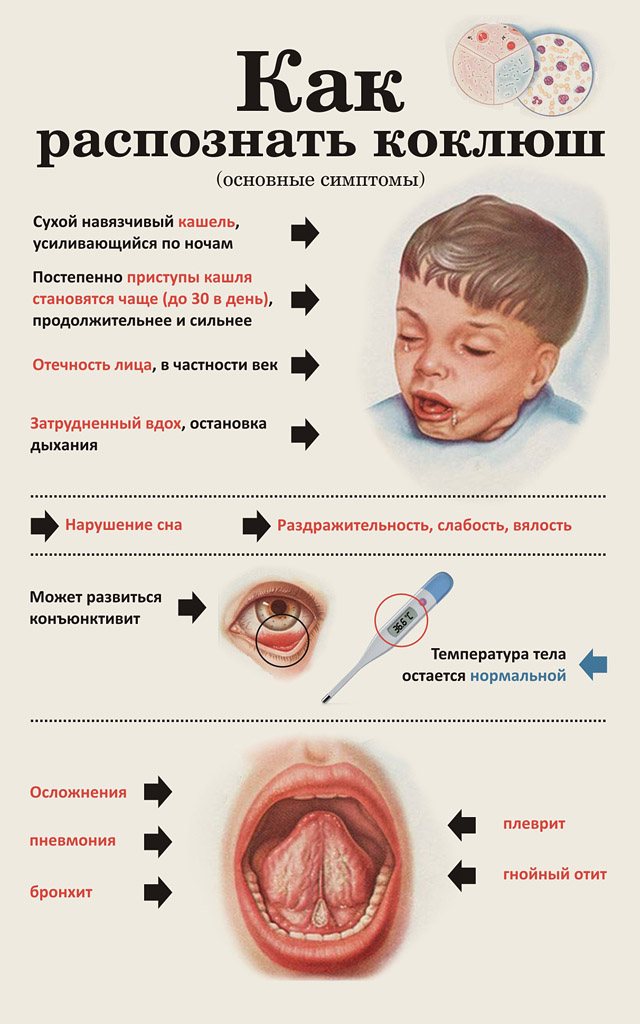
However, after the attacks and before their onset, the child feels absolutely normal. Therefore, if a baby has a severe and paroxysmal cough, which in turn looks like crowing, it is necessary to urgently undergo diagnostic testing for whooping cough.
Signs of the disease according to Dr. Komarovsky
According to the interpretation of the famous pediatrician Komarovsky, whooping cough develops sequentially. At the very beginning, a barely noticeable runny nose appears, and the body temperature rises to a maximum of 37.8 degrees. However, in most children, body temperature can remain normal (not exceed 37 degrees).
The initial stage of this disease is called catarrhal, which can last from five days to two weeks. It is at this stage that it is very difficult to suspect a dangerous infectious disease. Therefore, doctors often diagnose and prescribe treatment for mild bronchitis or acute respiratory diseases. In addition, in many cases, it is during the catarrhal period that the infected child continues to attend kindergarten or school, thereby exposing other children with whom he communicates to infection.

If we talk about the contagiousness of whooping cough, then a sick person is able to release harmful microbes into the external environment for about thirty days. But at the same time, the number of pertussis microbes released decreases daily, starting from the fifteenth day of the disease. And after twenty to twenty-five days the number of microbial rods generally becomes insignificant.
The disease is not limited to the catarrhal period and begins to develop further, which subsequently leads to spasmodic cough. An experienced pediatrician, having heard such a specific cough, will be able to immediately diagnose an infectious disease without any tests.
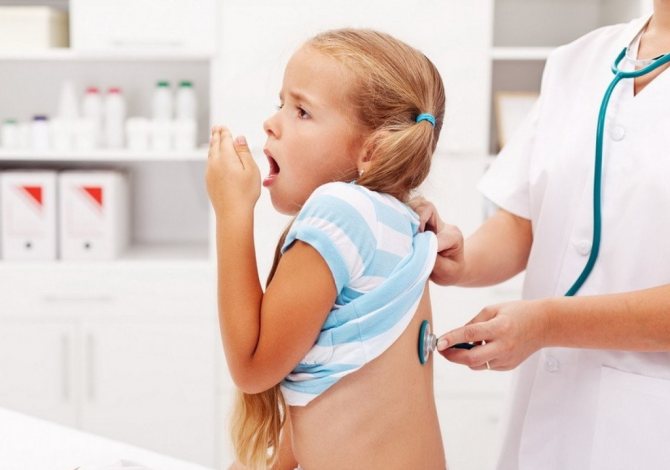
Characteristic features of the disease in children under one year of age
Depending on age, the course of the disease may develop differently. Moreover, in children under one year of age, moderate and severe whooping cough is often recorded, which has the following symptoms and its features:
- Slight sputum production. However, children simply swallow most of them.
- Feeling unwell between coughing fits.
- Decreased or complete absence of appetite.
- Developmental inhibition. This symptom is the main one, and is clearly noticeable in children under one year old, since it is at this age that the baby improves every day, begins to sit, crawl, walk and perform other motor and speech actions characteristic of him.
- There is a high risk of damage to the central nervous system.
- Subconjunctival bleeding is possible.
- Newborn babies have a quiet, barely noticeable cough.
- Cerebral circulation is impaired.
- In advanced cases and in the absence of proper treatment, periodic stops in breathing (apnea) may occur, which can lead to sudden infant death syndrome (SIDS).
It should be borne in mind that in most cases, certain antibodies to whooping cough can be determined only in the fourth to sixth week of spasmodic cough.
Distinctive symptoms of the disease in children aged two to three years
The older the child, the more obvious the signs of the disease become. For children aged two to three years, the following signs of whooping cough are typical:
- Body temperature rises to 37.1 - 37.7 degrees.
- A slight runny nose appears.
- In some cases, you may notice a slight cough.
- After two weeks, the cough intensifies and begins to express itself in the form of attacks, which are characterized by a series of coughing impulses with a deep whistling breath.
- During attacks, the baby's face may turn blue, and pinpoint hemorrhages may appear on the eyeballs.
- Usually the attacks end in vomiting.
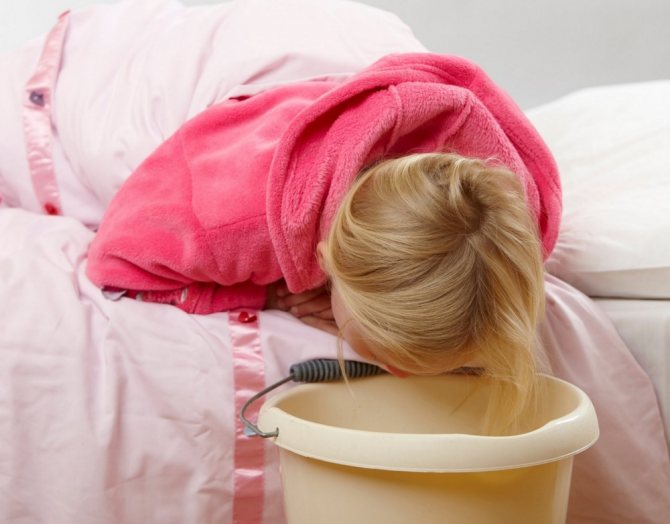
This period can last from three weeks to two months and is the most dangerous for the baby. Timely treatment helps reduce cough, which passes from a spasmodic to a non-convulsive state.
Complications.
The most common complications are: pneumonia (10-50% [1.5]), respiratory arrest (during coughing, but can occur spontaneously), convulsions (in 1-2% of children [7]), pulmonary hypertension, weight loss, sleep disturbances, fecal incontinence, loss of consciousness, hernias, bruising in the conjunctiva [1,8].
Read more about the diagnosis and treatment of the disease in the articles “Test for whooping cough - which one to take?” and “Treatment of whooping cough in children.”
How to prevent illness in a small child?
To prevent whooping cough in newborns and infants, since 2012 [9], pregnant women have been vaccinated against this infection all over the world. Typically, expectant mothers are vaccinated at 26-37 weeks of pregnancy.
After vaccination, protective antibodies are produced in the mother's body, which enter the bloodstream of the fetus and protect it after birth during the first year of life. And if a child does get whooping cough, then the infection is much milder and the risk of complications is minimal [10]. More details can be found in the article “Vaccination of pregnant women against whooping cough.”
Causes of whooping cough in a newborn
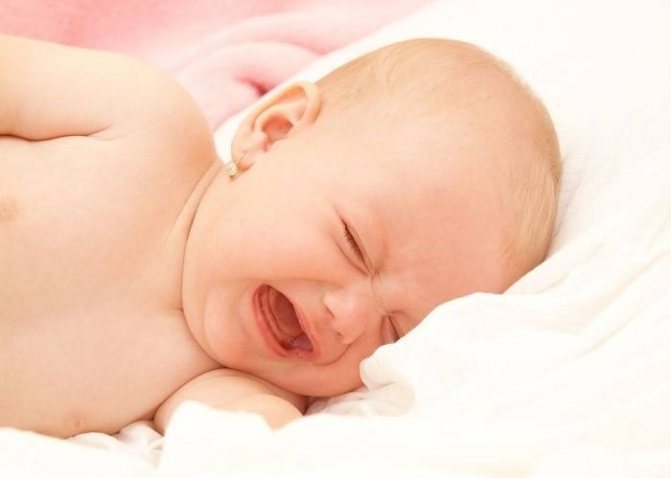
The most common cause of whooping cough in children is considered to be airborne infection. Babies in the first three months of life are more susceptible to this disease. This happens due to several factors:
- poor heredity, especially if one of the relatives suffers from chronic whooping cough;
- reduced immunity, the presence of congenital pathologies in the child, such as impaired development of the respiratory or cardiovascular system;
- lack of vaccination. Typically, a child in infancy should be vaccinated against whooping cough, diphtheria and tetanus in one preparation;
- intolerance to drugs from preventive vaccinations;
- numerous allergic reactions.
Important! During the process of bearing a child, he does not develop immunity against various infections, including whooping cough, so it is important to vaccinate the newborn in a timely manner.
Doctors say that it is extremely undesirable to suffer from whooping cough before the age of one year, as there is a risk of relapse.
Watch a video about whooping cough in infants.
